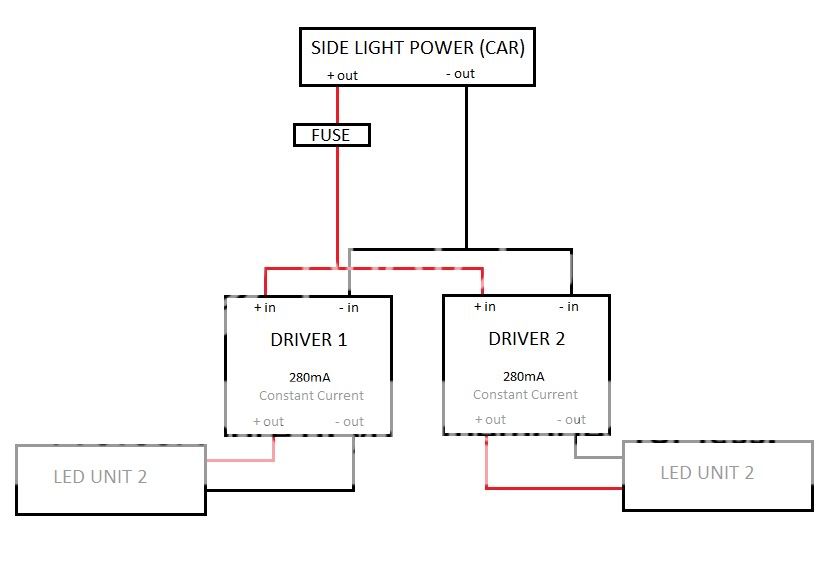I have a slight problem, when testing the Driver and LED with a spare car battery it all works fine but when actually connecting to the side light powe source of the car, the driver blows a fuse and if i change the fuse to higher amps, the driver just shuts off. any ideas why this could be happening? i tried with another driver that is very similar and the other driver works fine but the diffrence is that the other driver has a 12V regulator soldered on to the input wire.
The supplier of the driver recommends I use a 5W 12V or 13V Zener Diode to keep the voltage at 12V. He thinks that the high voltage is causing the driver to draw too much current. I just dont understand how a 280mA constant current output driver is blowing a 2A fuse, because i measured the current draw from the driver to the LED and it's 280mA exactly. And even when i increase the fuse size, it doesnt blow the higher rated fuse but instead the driver shuts down.
any help would be very much appreciated.
thanks
The supplier of the driver recommends I use a 5W 12V or 13V Zener Diode to keep the voltage at 12V. He thinks that the high voltage is causing the driver to draw too much current. I just dont understand how a 280mA constant current output driver is blowing a 2A fuse, because i measured the current draw from the driver to the LED and it's 280mA exactly. And even when i increase the fuse size, it doesnt blow the higher rated fuse but instead the driver shuts down.
any help would be very much appreciated.
thanks
Last edited:


